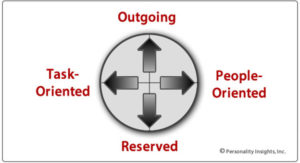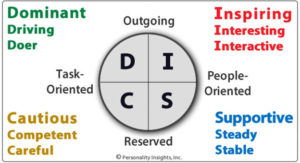By Selina R. McGee, OD, FAAO

Sept. 30, 2020
Discussing presbyopia with patients means more than merely informing them of their options. Here is the approach I use when conversing with presbyopic patients, and how I have used these conversations to build a presbyopia-focused practice.
Focus on Patient Education
Conversations should focus on learning about patients’ vision correction needs. I always ask my patients, “I want to know how you use your vision, so walk me through your typical day.” I have found this to be the most effective way to learn what solution is going to work best for each individual patient.
Cultivating Patient Relationships
Open-ended questions provide the most insight. Let your patients talk, then you can customize a presbyopia-correcting strategy based on their everyday needs. Many people have work or hobbies, for instance, that are not compatible with glasses or that require a combination of glasses and contact lenses. It’s our assignment as the eyecare specialists to offer our patients the right tool for the specific job and specific lifestyle activities.
My practice demographics include 16 percent who are 39-52 years of age, 19 percent who are 53-65, for a total of 35 percent of my practice falling into early presbyopia to absolute presbyopia. Almost 60 percent are women. Women continue to make 80 percent of the household purchasing decisions. Marketing efforts reflect the opportunities that this represents.
Educating younger presbyopes can often be more challenging than educating those who are older. Younger patients can still accommodate, so there are some instances where they can still see well, such as in great lighting. We also cannot overlook the psychological aspect of presbyopia: reminding people that they are getting older is not typically well received. This is another reason why it is so important to make strong connections with your patients.
Setting the Stage
I try to have conversations about presbyopia before it happens, so that my patients are prepared for its onset rather than shocked by their seemingly sudden difficulty with their near vision. Typically, I will start the educational process when they are in their late thirties; however, for most patients when it does happen, they still cannot quite grasp it. The most challenging patients to counsel are emmetropic presbyopes. They have never had to use any type of vision correction and they certainly do not want to start now!
These patients can be the hardest to please because they have high expectations.
If the patient is a latent hyperope, he or she may also be a great candidate for refractive lens exchange. Sometimes, I tee up the conversation by discussing the cost, over years, associated with contact lenses or glasses and how that compares with clear lens exchange. In my experience, hyperopes and latent hyperopes are often most interested in a surgical option because they struggle to see far away and close up and, quite frankly, can be miserable.
These conversations can require a significant amount of chair time if not approached with intention. Even in a busy practice where you are seeing 40+ patients a day, you can have these conversations that won’t disrupt clinic flow if done strategically. The key is to be thoughtful, have systems in place, and rely on your team—the technicians and scribes—to streamline the process.
The DiSC Model of Human Behavior


Positive relationships stem from having an accurate understanding of others. DiSC is a powerful tool for obtaining a new appreciation for personality styles and their effect on everyday life.
The Dominant “D” type – An outgoing, task-oriented individual will be focused on getting things done, accomplishing tasks, getting to the bottom line as quickly as possible and MAKING IT HAPPEN! (The key insight in developing a relationship with this type person is RESPECT and RESULTS.)
The Inspiring “I” type – An outgoing, people-oriented individual loves to interact, socialize and have fun. This person is focused on what others may think of him or her. (The key insight in developing a relationship with this type person is ADMIRATION and RECOGNITION.)
The Supportive “S” type – A reserved, people-oriented individual will enjoy relationships, helping or supporting other people and working together as a team. (The key insight in developing a relationship with this person is FRIENDLINESS and SINCERE APPRECIATION.)
The Cautious “C” type – A reserved, task-oriented individual will seek value, consistency and quality information. This person focuses on being correct and accurate. (The key insight in developing a relationship with this individual is TRUST and INTEGRITY.)
Make Conversations Work Better By Understanding Personality Types
When it comes to making connections with patients that facilitate open discussions that allow you to best find a customized presbyopia correcting solution, you have to be skilled at reading people. I have spent time studying personality types and how people answer questions, which facilitates how I communicate with that individual. I use the DiSC (Dominant, Inspiring, Cautious, Supportive) method of describing people and their personality types. DiSC is based on two foundational observations about how people normally behave. First, some are more outgoing and some are more reserved, and second, some people are more task-oriented and some are more people-oriented.
If I am dealing with someone who is a D or dominant personality, for example, I am not going to go into every nitty-gritty detail, because they just want the answer and they want to move on. Dominant folks want the bottom line. A C or cautious personality type needs every available piece of information before they can move forward with a decision (see sidebar).
Once you have an understanding of these personality nuances, you can communicate with them more effectively, and this is one way I use to connect with my patients. I think the biggest key is to be intentional about it. You cannot go into a room and with your white coat on and sit down with the computer, never make eye contact and not bother trying to connect with someone. That’s not how that works. Communication should be a skill that you consistently work on.
I also pay attention to body language. This also takes time upfront when getting to know patients, but it saves time in the long run. One of my mantras is “it takes a long time to slow down.” When I do the work upfront, things flow so much better and I am not on the back-end thinking, I should have done this or that.
It’s no secret that patients’ expectations are exceedingly high. They want the “easy button” solution. I fit a large number of gas permeable multifocal contact lenses versus soft lenses that most practitioners favor. I have gotten much better at the process, and it saves me chair time because the optics with the lenses can be superior. Comfort is an early trade off, but for motivated patients, they can be a good option, and a great practice differentiator. You do need to counsel the patient, and, of course, set the right expectations.
Creating a Vision & Long-Term Plan that Includes a Focus on Presbyopia
I have a boutique-type practice with a dry eye center of excellence and I also prescribe specialty contact lenses. About 30 percent of my patients are diagnosed with dry eye disease and subsequently become part of my dry eye clinic, and about 3 percent of my patient population will develop glaucoma.
In addition, patients may have children who are myopic and so they could benefit from education around myopia progression. Sun protection and nutrition to potentially protect against progressive eye diseases are also important areas for patient conversations. Remember, there is an entire whole person behind that set of eyeballs you are looking at. Don’t forget the importance of treating them completely.
I am ramping up to market myself as a presbyopia-focused practice, and I plan to take advantage of all technologies that are available and, eventually, those currently in the pipeline, including pharmaceutical options.
Other Articles to Explore
I want to position myself as the trusted advisor on everything having to do with up-close vision. There is an immense opportunity for developing your practice to target presbyopia management, particularly when it comes to emmetropic patients who often skip a comprehensive eye exam because they “see fine.”
 Selina R. McGee, OD, FAAO, is the founder of Precision Vision of Edmond in Oklahoma and is also immediate past-president Oklahoma Association of Optometric Physicians. To contact her: selinarm@yahoo.com
Selina R. McGee, OD, FAAO, is the founder of Precision Vision of Edmond in Oklahoma and is also immediate past-president Oklahoma Association of Optometric Physicians. To contact her: selinarm@yahoo.com

























